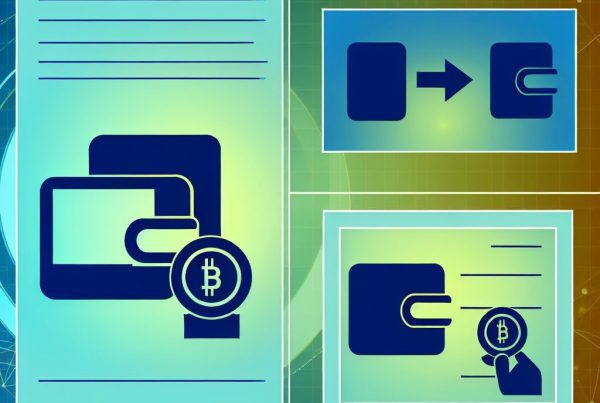Understanding Digital Signatures in the Cryptocurrency Industry
Digital signatures are a crucial component of the cryptocurrency ecosystem, providing a secure method for verifying the authenticity and integrity of digital messages and transactions. As the cryptocurrency market continues to grow, understanding how digital signatures work and their significance in blockchain technology becomes increasingly important.
What Are Digital Signatures?
A digital signature is a cryptographic technique that allows an individual or entity to sign a digital document or transaction, ensuring that it has not been altered in transit. This technology uses a pair of keys: a private key, which is kept secret by the signer, and a public key, which is shared with others. When a digital signature is created, it generates a unique hash of the document or transaction, which is then encrypted with the signer’s private key.
When someone receives a digitally signed document, they can use the signer’s public key to decrypt the signature and verify the hash. If the hash matches the document, it confirms that the document is authentic and has not been tampered with.
The Role of Digital Signatures in Cryptocurrency
In the cryptocurrency industry, digital signatures play a vital role in ensuring the security and integrity of transactions. Here are some key functions they serve:
- Authentication: Digital signatures verify the identity of the sender, ensuring that the transaction is initiated by the rightful owner of the cryptocurrency.
- Integrity: They ensure that the transaction data has not been altered during transmission, maintaining the integrity of the blockchain.
- Non-repudiation: Once a transaction is signed, the sender cannot deny having sent it, providing legal assurance in disputes.
How Digital Signatures Work in Blockchain
Blockchain technology relies heavily on digital signatures to secure transactions. Here’s a step-by-step breakdown of how this process works:
- Transaction Creation: A user initiates a transaction by creating a message that includes details such as the recipient’s address and the amount of cryptocurrency being sent.
- Hashing: The transaction data is hashed using a cryptographic hash function, producing a fixed-size string of characters that uniquely represents the transaction.
- Signing: The user then encrypts the hash with their private key, creating the digital signature.
- Broadcasting: The transaction, along with the digital signature, is broadcasted to the network for validation.
- Verification: Other nodes in the network use the sender’s public key to decrypt the signature and verify the hash against the transaction data.
- Inclusion in the Blockchain: Once verified, the transaction is added to a block and subsequently to the blockchain, making it immutable.
Cryptographic Algorithms Used for Digital Signatures
Several cryptographic algorithms are commonly used to create digital signatures in the cryptocurrency space. The most notable include:

- RSA (Rivest-Shamir-Adleman): One of the first public-key cryptosystems, RSA is widely used for secure data transmission.
- DSA (Digital Signature Algorithm): A federal standard for digital signatures, DSA is often used in conjunction with the Digital Signature Standard (DSS).
- ECDSA (Elliptic Curve Digital Signature Algorithm): This algorithm is favored in cryptocurrencies like Bitcoin due to its efficiency and smaller key sizes compared to RSA.
Advantages of Digital Signatures in Cryptocurrency
Digital signatures offer numerous advantages that enhance the security and functionality of cryptocurrency transactions:
- Enhanced Security: Digital signatures provide a high level of security, making it extremely difficult for malicious actors to forge signatures or alter transaction data.
- Efficiency: The use of digital signatures streamlines the transaction process, allowing for quick verification and confirmation.
- Cost-Effectiveness: By reducing the need for intermediaries, digital signatures lower transaction costs in the cryptocurrency ecosystem.
Challenges and Limitations of Digital Signatures
Despite their advantages, digital signatures are not without challenges:
- Key Management: Users must securely manage their private keys; losing a private key can result in the loss of access to funds.
- Regulatory Concerns: The legal status of digital signatures varies by jurisdiction, which can complicate their use in certain regions.
- Scalability Issues: As the number of transactions increases, the verification process can become a bottleneck, impacting network performance.
Real-World Applications of Digital Signatures in Cryptocurrency
Digital signatures are not just theoretical constructs; they have practical applications in various aspects of the cryptocurrency industry:
1. Bitcoin Transactions
Bitcoin utilizes the ECDSA algorithm for its digital signatures. Each transaction is signed with the sender’s private key, ensuring that only the owner can authorize the transfer of their bitcoins. This mechanism has been fundamental in establishing Bitcoin as a secure and decentralized currency.
2. Smart Contracts
In platforms like Ethereum, digital signatures are used to validate transactions and execute smart contracts. When a user interacts with a smart contract, their signature confirms their intent, allowing the contract to execute automatically based on predefined conditions.
3. Decentralized Finance (DeFi)
In the DeFi space, digital signatures are essential for securing transactions and interactions between users and protocols. They ensure that only authorized users can access their funds and execute trades, enhancing trust in decentralized applications.
Statistics on Digital Signatures in Cryptocurrency
Understanding the impact of digital signatures in the cryptocurrency industry can be illustrated through various statistics:
- According to a report by Statista, the number of cryptocurrency users worldwide reached over 300 million in 2023.
- A study by Blockchain.com found that over 90% of all Bitcoin transactions utilize digital signatures for security.
- The global digital signature market is projected to grow from $3.4 billion in 2020 to $26.5 billion by 2027, according to Research and Markets.
Frequently Asked Questions (FAQs)
What is the difference between a digital signature and an electronic signature?
A digital signature is a specific type of electronic signature that uses cryptographic techniques to provide a higher level of security and authenticity. While all digital signatures are electronic signatures, not all electronic signatures are digital signatures.
How do I create a digital signature for my cryptocurrency transactions?
To create a digital signature, you need a cryptocurrency wallet that supports digital signatures. When you initiate a transaction, the wallet will automatically generate a digital signature using your private key.
Can digital signatures be hacked?
While digital signatures are highly secure, they can be compromised if a user’s private key is stolen or mishandled. It is crucial to use secure methods for key storage and management to prevent unauthorized access.
Are digital signatures legally binding?
In many jurisdictions, digital signatures are considered legally binding, provided they meet certain criteria. However, the legal status can vary, so it is essential to understand the regulations in your area.
Conclusion
Digital signatures are an integral part of the cryptocurrency landscape, providing essential security features that protect transactions and ensure trust among users. As the industry continues to evolve, the importance of understanding digital signatures will only grow. By leveraging this technology, cryptocurrencies can maintain their integrity and foster a secure environment for users.
For more insights and updates on cryptocurrency, visit Bitrabo. Stay connected with me on social media: X, Instagram, and Threads.
Disclaimer: The information provided in this article is for educational purposes only and should not be considered financial advice. Always conduct your own research before making investment decisions.
The Crypto Watchlist of the Week 🔎
Subscribe to receive expert-curated projects with real potential—plus trends, risks, and insights that matter. Get handpicked crypto projects, deep analysis & market updates delivered to you.


